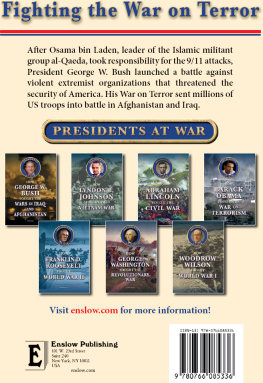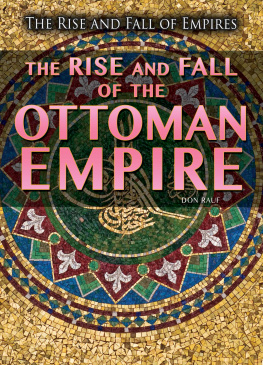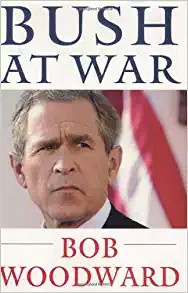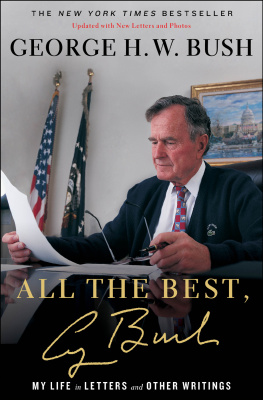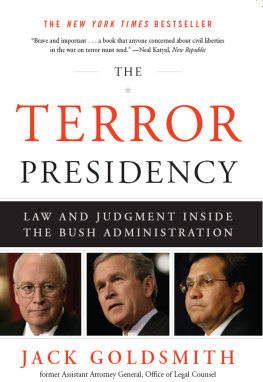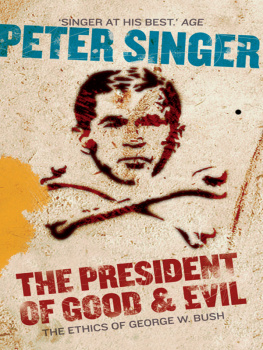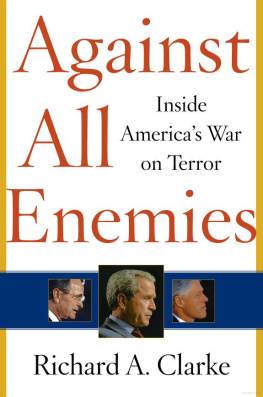Published in 2018 by Enslow Publishing, LLC.
101 W. 23rd Street, Suite 240, New York, NY 10011
Copyright 2018 by Enslow Publishing, LLC.
All rights reserved.
No part of this book may be reproduced by any means without the written permission of the publisher.
Library of Congress Cataloging-in-Publication Data
Names: Rauf, Don, author.
Title: How George W. Bush fought the wars in Iraq and Afghanistan / Don Rauf.
Description: New York : Enslow Publishing, 2018. | Series: Presidents at war | Includes bibliographical references and index. | Audience: Grades 7-12.
Identifiers: LCCN 2017003128 | ISBN 9780766085336 (library-bound)
Subjects: LCSH: Bush, George W. (George Walker), 1946 Military leadership Juvenile literature. | War on Terrorism, 20012009Juvenile literature. | Afghan War, 2001Juvenile literature. | Iraq War, 20032011Juvenile literature. | United StatesForeign relations20012009Juvenile literature. | United StatesPolitics and government20012009Juvenile literature.
Classification: LCC E903.3.R38 2017 | DDC 973.931092 [B]dc23
LC record available at https://lccn.loc.gov/2017003128
Printed in the United States of America
To Our Readers: We have done our best to make sure all website addresses in this book were active and appropriate when we went to press. However, the author and the publisher have no control over and assume no liability for the material available on those websites or on any websites they may link to. Any comments or suggestions can be sent by e-mail to .
Photo Credits: Cover, pp. Ulrich Baumgarten/Getty Images.
INTRODUCTION
CHAPTER 1THE AGE OF TERRORISM BEGINS
CHAPTER 2SETTING THE STAGE FOR WAR
CHAPTER 3THE BATTLE AGAINST THE TALIBAN
CHAPTER 4REBUILDING AFGHANISTAN
CHAPTER 5A PIVOT TO IRAQ
CHAPTER 6A SHORT WAR BUT A LINGERING BATTLE
CHAPTER 7MISSION ACCOMPLISHED?: THE POST-WAR BLUES
CHAPTER 8A NEW IRAQ MOVES FORWARD AS UNREST CONTINUES
CHRONOLOGY
CHAPTER NOTES
GLOSSARY
FURTHER READING
INDEX
After two hijacked airplanes slammed into the twin towers in New York on September 11, 2001, President George W. Bush initiated the war on terror.
INTRODUCTION
W hen George W. Bush was president of the United States, between 2001 and 2009, the United States entered a war unlike any it had ever encountered before. This was a war on terror, and while it was to be fought against specific regimes in Afghanistan and Iraq, it was also going to be waged everywhere in the world, as the United States and other countries attempted to stop acts of terrorism wherever they might occur.
The wars of George W. Bush, the forty-third president of the United States, were brought on by a cataclysmic eventthe attacks by terrorists on American soil on September 11, 2001. Terrorist acts by Islamic extremists had been increasing around the world throughout the Bill Clinton administration, prior to George W. Bush becoming president. From the moment of 9/11, Bushs top priority was to protect Americans from evildoers. Bush said later that the moment he realized the country was under attack, US foreign policy quickly changed direction: from one of little intervention to one in which America would take aggressive action to destroy terrorists and prevent further hostile actions toward the country.
In the days following the attacks, President Bush showed the calm, resolve, and strength that the country desperately needed to carry on. He did a masterful job speaking to all citizens in a moment of crisis, and his popularity rose to an all-time high. His call to Americans was to remain calm and carry on, to show the terrorists that Americans would not let these actions deter them from their normal lives. Some criticized him for urging people to go shopping and take vacations during this time of crisis, but others saw his words as encouragement to not to be intimidated by terrorists and to refuse to live lives led by fear.
Even in his first inaugural address in January 2001, Bush made clear his objectives for the nation: If our country does not lead the cause of freedom, it will not be led. If we do not turn the hearts of children toward knowledge and character, we will lose their gifts and undermine their idealism. If we permit our economy to drift and decline, the vulnerable will suffer most.
To fight back against Osama bin Laden, the master-mind of the attacks, the United States entered the longest war in American history. On December 28, 2014, President Barack Obama called an official end to the combat mission,
In a more controversial move, President Bush took the war on terror into Iraq. Bush launched a preemptive strike against Saddam Hussein, convinced that he had weapons of mass destruction, although these weapons never materialized. Saddam was a merciless dictator who severely limited personal freedoms. When Bush toppled Saddam Husseins regime, he established a democratic government in Iraq, but a strong insurgent movement rose in the region and American troops suffered more than four thousand deaths over the course of eight years.
Bushs presidency was controversial right from the beginning. During the 2000 election, his opponent, Al Gore, won the popular vote. The difference in the popular vote in Florida was razor thin. The US Supreme Court, however, stopped a recount of votes in Florida, despite Bush having just a 537-vote lead in the state. This meant Bush won the election. Former Bush speechwriter David Frum said that no matter what Bush went through, he had perseverance and tenacity that propelled him forward. There is a kind of personal stubbornness that makes him take hold of something, and not let it go, he said. Bush told journalist Bob Woodward, Im a gut player. I play by instincts. I dont play by the book. Wayne Slater, the bureau chief for the Dallas Morning News in Austin, said that Bush had absolute confidence in his ability to get something done, and thats how he proceeded throughout his presidency and through two wars, which have brought more freedoms to Iraq and Afghanistan but have not eliminated the instability in these regions.

THE AGE OF TERRORISM BEGINS
George W. Bushs job approval rating following September 11 was 90 percent, higher than the approval rating received by Franklin Roosevelt after Pearl Harbor.
F or President George Bush, the wars in Iraq and Afghanistan had their beginning moments in a calm and innocent setting. On the morning of September 11, 2001, Bush was scheduled to visit the students in Sandra Kay Daniels second-grade class at the Emma E. Booker Elementary School in Sarasota, Florida. It was a minor event to promote his educational initiative No Child Left Behind. Bush was in an upbeat mood, and he told his chief of staff, Andrew Card, It should be an easy day. The students, many from struggling families, were also in a good mood, excited to meet the president. To help develop their reading skills, Ms. Daniel had her children reading a short, simple book called

